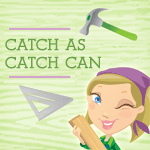As I watch the Food Network, cruise the internet for tips and videos, and generally dream about flaky pie crust, I keep seeing marble pastry boards.
Pastry dough, in general, has more butter or shortening in it. This gives it the light, flaky texture that makes a good pastry. The problem is that you have to chill the dough before working with it, or it can get very sticky and fall apart. The idea behind something like a marble pastry board is that you can chill it first, then roll your dough out on it. The dough stays nice and cool and easy to work with.
These pastry boards are pretty much a big slab of marble, usually cost from around $25 to $150.
I wanted to see if I could get one for under ten bucks.
My inspiration was my sister-in-law. She uses a big section of countertop as her bread-kneading board. With this in mind, I went to a local place that makes custom marble and granite countertops. The very nice man in their front room was very approachable, and I asked what usually happens to the sink cut-outs. He told me that they often break and are just thrown out. I mentioned that if he had a reasonably whole one, I would be interested in buying it.
He told me I could have it for free.
Next thing I know, I am leaving with TWO cut-outs: a smaller marble one, and a bigger granite one.
Here's the marble one:
As you can see, it is toddler approved - so much so that I couldn't convince him to stop petting it long enough for me to take a picture.
It has a couple of scratches, but it is still perfectly suited to my use. All I did was wash it, and go to Joann Fabric looking for some feet to put on it.
The rubber feet are to keep it from scratching my table. I love my table very much and will protect it at all costs.
This pack of grippy circle things cost me five bucks, and has enough feet for both the marble board and the granite one. That's $2.50 for each board.
The only effort involved was turning the heavy thing over, and sticking on the feet.
Here's my brand new marble pastry board, complete with table-protecting rubber feet, for only $2.50 and almost no effort.
I'm feeling awfully proud of myself right now. I might celebrate with pastry.
More cool stuff here!





































